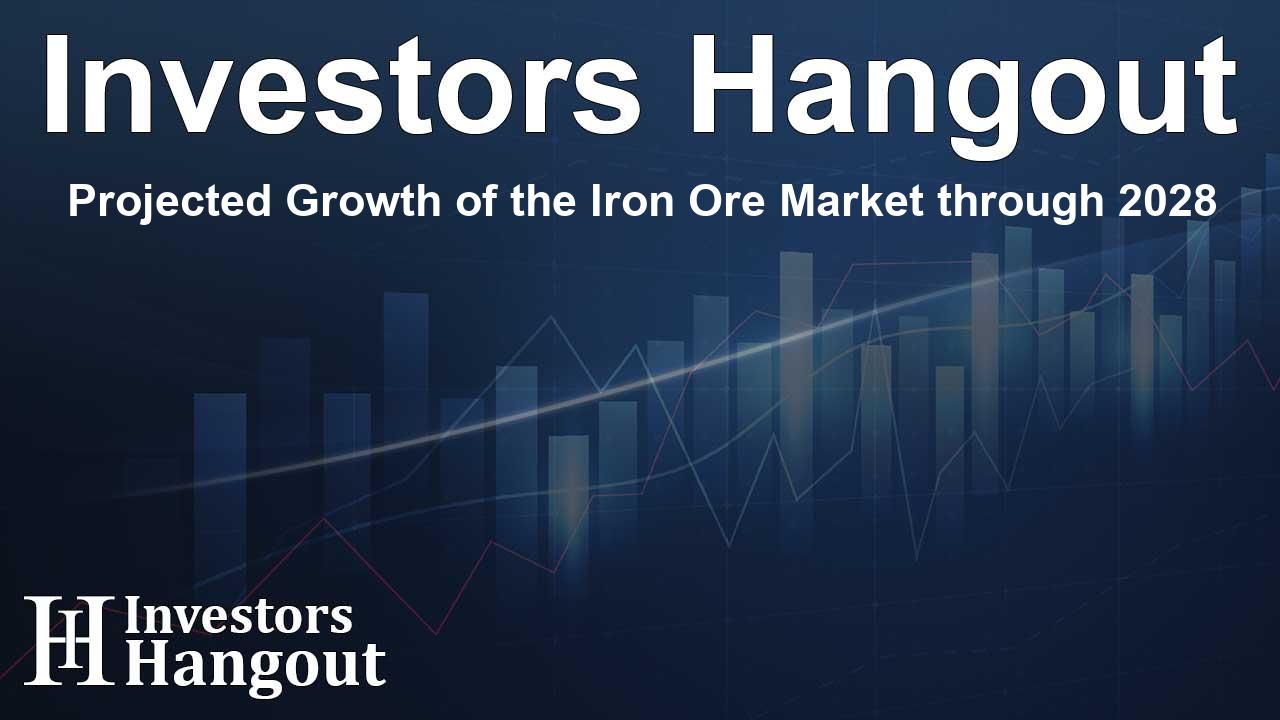Projected Growth of the Iron Ore Market through 2028

Iron Ore Market Overview
The global iron ore market is on a significant growth trajectory, projected to increase by USD 57.5 billion from 2024 to 2028. This impressive growth is primarily driven by the rising demand for high-strength iron ore and steel, essential materials for various industries including construction, automotive, and appliances. As economies around the world continue to develop and infrastructure projects proliferate, the need for iron ore remains crucial.
Market Dynamics and Trends
In recent years, there has been an upsurge in the consumption of high-quality iron ore, particularly in rapidly developing countries. The construction and manufacturing sectors, especially in key markets, are experiencing rapid expansion. The increasing demand for stainless steel, coupled with an economic resurgence, has positioned the iron ore industry for substantial growth. Notably, advanced technologies including artificial intelligence are now playing a vital role in transforming market dynamics and creating more efficient practices across the iron ore production process.
Key Drivers of Growth
The iron ore market's growth is influenced by several key drivers:
1. Rising Demand for Steel
Steel production is at the heart of the iron ore market, as iron ore is a critical ingredient in steel manufacturing. The ongoing demand for steel in construction and automotive industries drives the need for iron ore. With increasing global urbanization and continuous infrastructure development, these industries continue to expand, leading to a robust demand for high-strength steel.
2. Advancements in Mining Technology
Innovations in mining technology have significantly improved efficiency and sustainability in iron ore extraction. The adoption of AI and data analytics facilitates enhanced decision-making processes and operational efficiencies, reducing costs and environmental impact. These advancements contribute positively to the market's growth.
3. Global Economic Growth
Encouraged by ongoing developments in emerging economies, particularly the manufacturing and construction sectors, the global demand for iron ore has surged. Countries with large-scale infrastructure projects and industrial developments are the primary consumers of steel, thereby directly impacting the iron ore market.
Regional Insights
The iron ore market can be classified into various regions, with each exhibiting unique characteristics and drivers:
1. Asia-Pacific
The Asia-Pacific region, particularly countries such as China and India, dominates the iron ore market and is expected to account for a significant portion of the total consumption. The high concentration of steel production facilities in China is a major factor driving the demand for iron ore in this region.
2. Europe and North America
These regions are also engaged in steel production, though at a smaller scale compared to Asia. Nonetheless, the ongoing infrastructural developments provide a conducive environment for steady demand for iron ore, thereby supporting the market growth.
Challenges Faced by the Market
Despite the positive outlook, the iron ore market faces several challenges that could impact growth, including:
1. Environmental Concerns
The environmental impact of mining activities cannot be overlooked. Issues such as habitat destruction, wastewater management, and the overall carbon footprint of mining operations require corporate responsibility and sustainable practices from key players in the market.
2. Regulatory Compliance
With heightened awareness of environmental issues, governments have imposed stricter regulations regarding mining practices, requiring manufacturers to invest in compliance and modernization of their production facilities.
Conclusion
The future of the iron ore market looks promising, driven by strong demand from various industrial sectors. Companies are increasingly focusing on sustainability and technological advancements, ensuring that they remain competitive while also addressing environmental concerns. The anticipated growth over the next few years underscores the necessity of adapting to changing consumer needs and market dynamics.
Frequently Asked Questions
What is driving the growth of the iron ore market?
The growth is mainly driven by increasing global demand for steel, combined with advancements in mining technology and economic development, particularly in Asia-Pacific.
How much is the iron ore market expected to grow?
The iron ore market is projected to grow by USD 57.5 billion from 2024 to 2028.
What regions dominate the iron ore market?
The Asia-Pacific region, particularly China and India, dominates the iron ore market due to high demand for steel production.
What are the key challenges faced by the iron ore market?
Challenges include environmental impact concerns and the need for compliance with increasing government regulations regarding mining practices.
How is technology affecting the iron ore market?
Technological advancements, especially in AI and data analytics, are improving operational efficiency, reducing costs, and enabling more sustainable mining practices.
About Investors Hangout
Investors Hangout is a leading online stock forum for financial discussion and learning, offering a wide range of free tools and resources. It draws in traders of all levels, who exchange market knowledge, investigate trading tactics, and keep an eye on industry developments in real time. Featuring financial articles, stock message boards, quotes, charts, company profiles, and live news updates. Through cooperative learning and a wealth of informational resources, it helps users from novices creating their first portfolios to experts honing their techniques. Join Investors Hangout today: https://investorshangout.com/
Disclaimer: The content of this article is solely for general informational purposes only; it does not represent legal, financial, or investment advice. Investors Hangout does not offer financial advice; the author is not a licensed financial advisor. Consult a qualified advisor before making any financial or investment decisions based on this article. The author's interpretation of publicly available data shapes the opinions presented here; as a result, they should not be taken as advice to purchase, sell, or hold any securities mentioned or any other investments. The author does not guarantee the accuracy, completeness, or timeliness of any material, providing it "as is." Information and market conditions may change; past performance is not indicative of future outcomes. If any of the material offered here is inaccurate, please contact us for corrections.